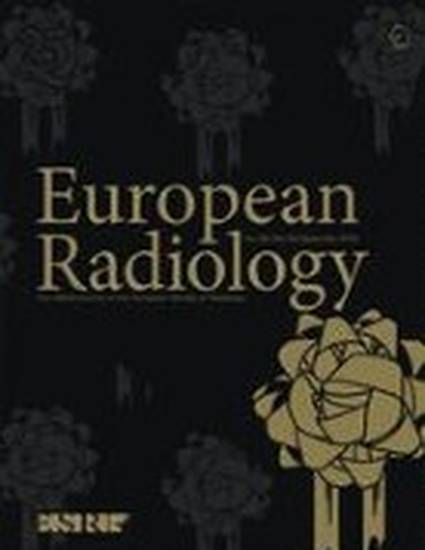
Article
Identification of Imaging Predictors Discriminating Different Primary Liver Tumours in Patients with Chronic Liver Disease on Gadoxetic Acid-Enhanced MRI: A Classification Tree Analysis
European Radiology
(2016)
Abstract
Objectives To identify predictors for the discrimination of intrahepatic cholangiocarcinoma (IMCC) and combined hepatocellular-cholangiocarcinoma (CHC) from hepatocellular carcinoma (HCC) for primary liver cancers on gadoxetic acid-enhanced MRI among high-risk chronic liver disease (CLD) patients using classification tree analysis (CTA).
Methods A total of 152 patients with histopathologically proven IMCC (n = 40), CHC (n = 24) and HCC (n = 91) were enrolled. Tumour marker and MRI variables including morphologic features, signal intensity, and enhancement pattern were used to identify tumours suspicious for IMCC and CHC using CTA.
Results On CTA, arterial rim enhancement (ARE) was the initial splitting predictor for assessing the probability of tumours being IMCC or CHC. Of 43 tumours that were classified in a subgroup on CTA based on the presence of ARE, non-intralesional fat, and non-globular shape, 41 (95.3 %) were IMCCs (n = 29) or CHCs (n = 12). All 24 tumours showing fat on MRI were HCCs. The CTA model demonstrated sensitivity of 84.4 %, specificity of 97.8 %, and accuracy of 92.3 % for discriminating IMCCs and CHCs from HCCs.
Conclusions We established a simple CTA model for classifying a high-risk group of CLD patients with IMCC and CHC. This model may be useful for guiding diagnosis for primary liver cancers in patients with CLD.
Key Points
- Arterial rim enhancement was the initial splitting predictor on CTA.
- CTA model achieved high sensitivity, specificity, and accuracy for discrimination of tumours.
- This model may be useful for guiding diagnosis of primary liver cancers.
Keywords
- hepatocellular carcinoma,
- cholangiocarcinoma,
- combined hepatocellular-cholangiocarcinoma,
- gadoxetic acid,
- classification tree analysis
Disciplines
Publication Date
September, 2016
DOI
https://doi.org/10.1007/s00330-015-4136-y
Citation Information
Hyun Jeong Park, Kyung Mi Jang, Tae Wook Kang, Kyoung Doo Song, et al.. "Identification of Imaging Predictors Discriminating Different Primary Liver Tumours in Patients with Chronic Liver Disease on Gadoxetic Acid-Enhanced MRI: A Classification Tree Analysis" European Radiology Vol. 26 Iss. 9 (2016) p. 3102 - 3111 ISSN: 0938-7994 Available at: http://works.bepress.com/juna-goo/6/
